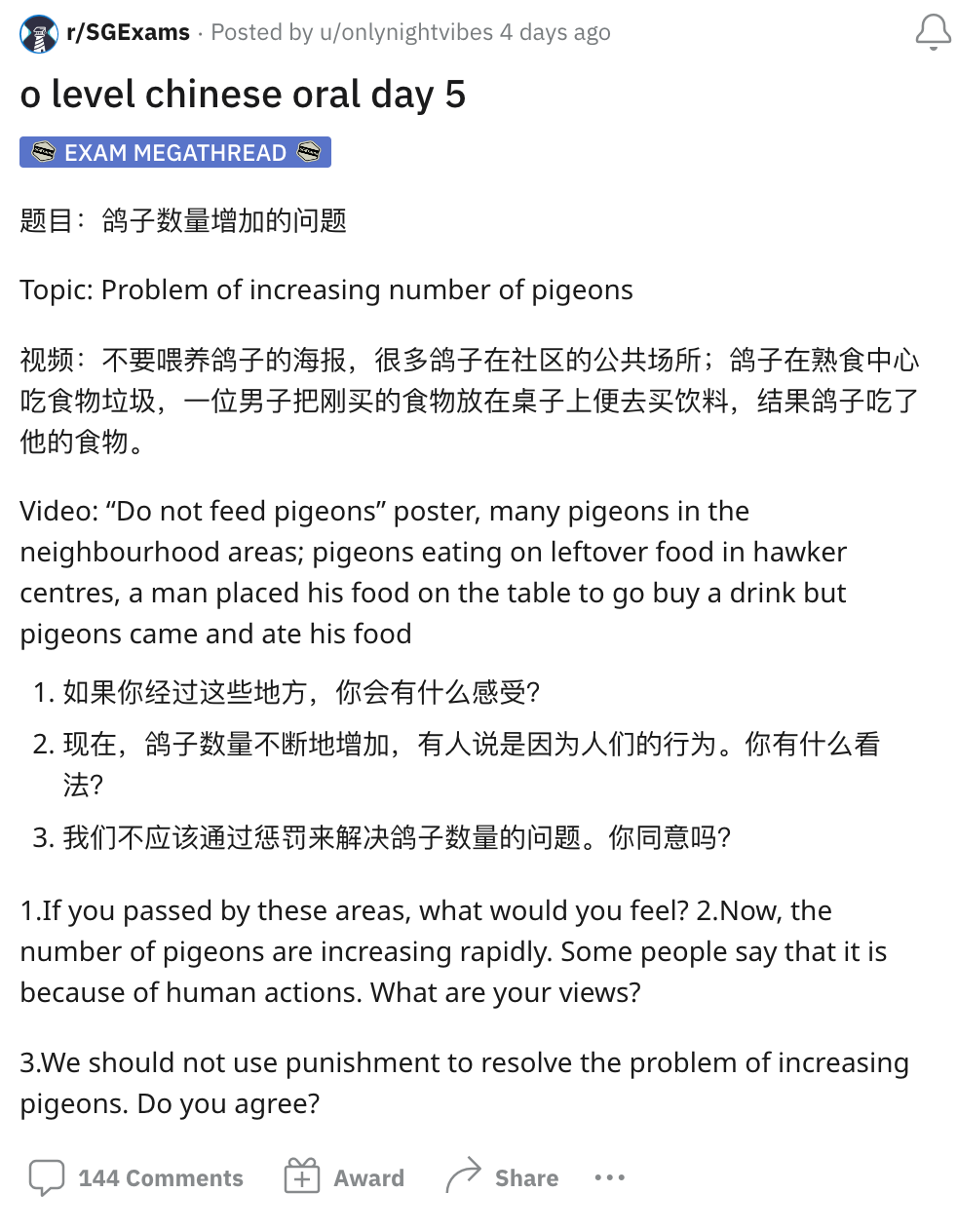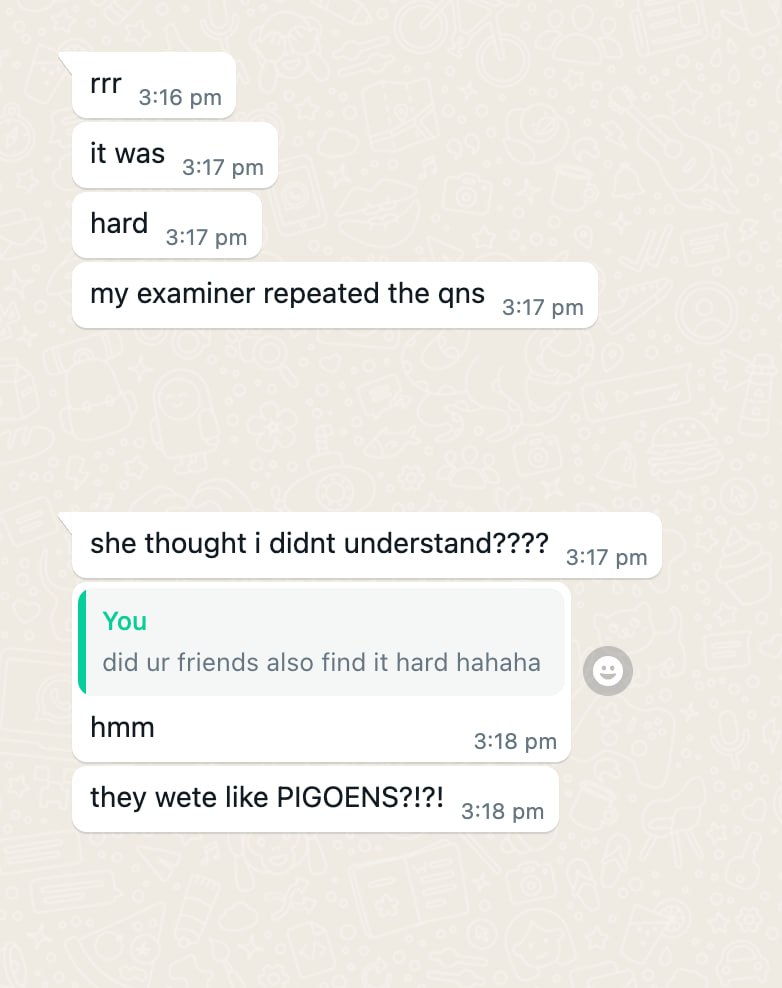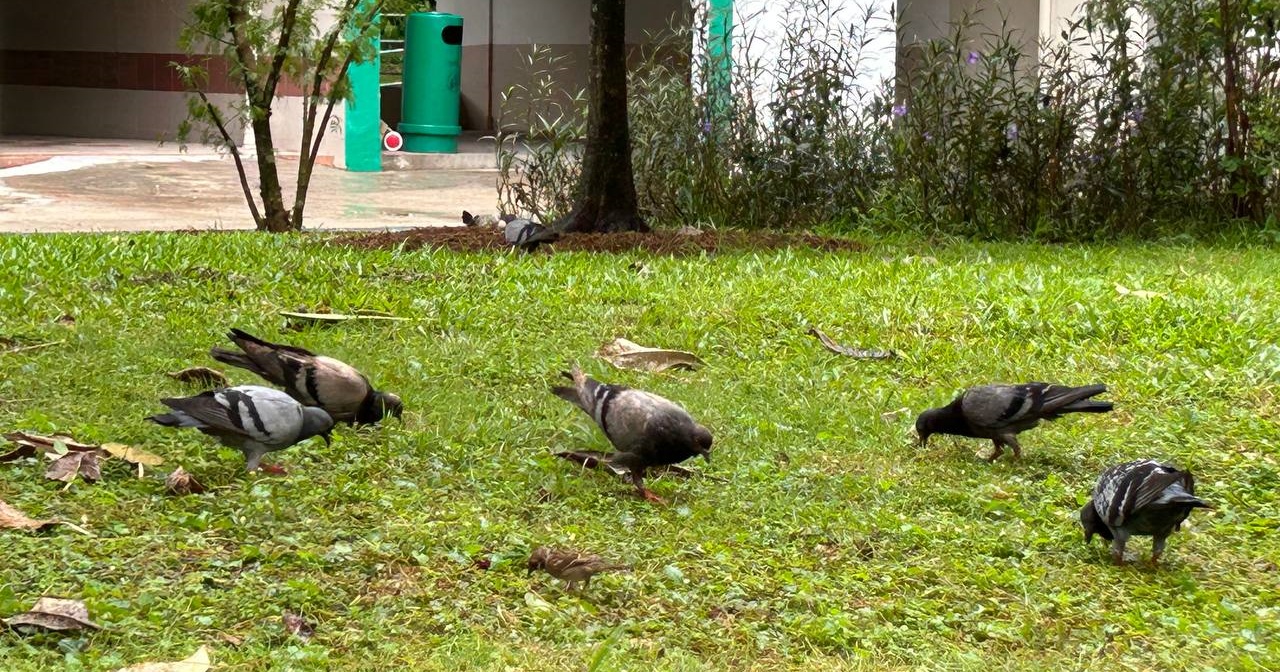Many Secondary Three students were baffled by this year's O-Level Chinese examination questions.
During last week's listening comprehension examination on Jul. 4, students were horrified over the comprehension passage, which was a tale about a cleaner unplugging hospital patients' life support.
This week, on the fifth day of oral examinations, students were asked about the overpopulation of pigeons.
Problem of increasing number of pigeons
For those who haven't sat for a Chinese oral examination recently, this is how it goes:
Students will first be shown a short video clip and an overarching question.
They will be given a few minutes to prepare their answer, and are expected to give a few argumentative points with evidence based on the video shown.
This time, the video featured a "Do not feed the pigeons" poster, and scenes of pigeons gathering in public areas, as well as pigeons eating leftover food in hawker centres.
Next, a man was shown placing his food on a table. He then left to buy a drink. However, when he came back, he saw pigeons eating his food.

According to a Reddit post, the following questions were asked to the students:
- If you passed by these areas, how would you feel?
- The number of pigeons has been continuously increasing. Some say that this is due to human behaviour. What are your views on this?
- Punishment should not be used to address this issue. Do you agree?
Student reactions
Usually, students would prepare for commonly-tested and predictable topics related to morals, environment, society etc.
Understandably, some students were baffled by the topic on pigeons as well as the questions asked; this topic clearly took them by surprise, especially those who tried to "spot" specific topics.
 Photo via Mothership reader.
Photo via Mothership reader.
Some of the complaints on Reddit include having difficulties with specific terminology like the Chinese terms for young pigeons and pigeon poop.
A number also said that they had to request their examiners to repeat the questions.
The topics that were tested during the 2023 O-Level Chinese oral examinations included hawker culture, the use of public spaces, the environment, and technology.

Top photo by Zheng Zhangxin.
If you like what you read, follow us on Facebook, Instagram, Twitter and Telegram to get the latest updates.



